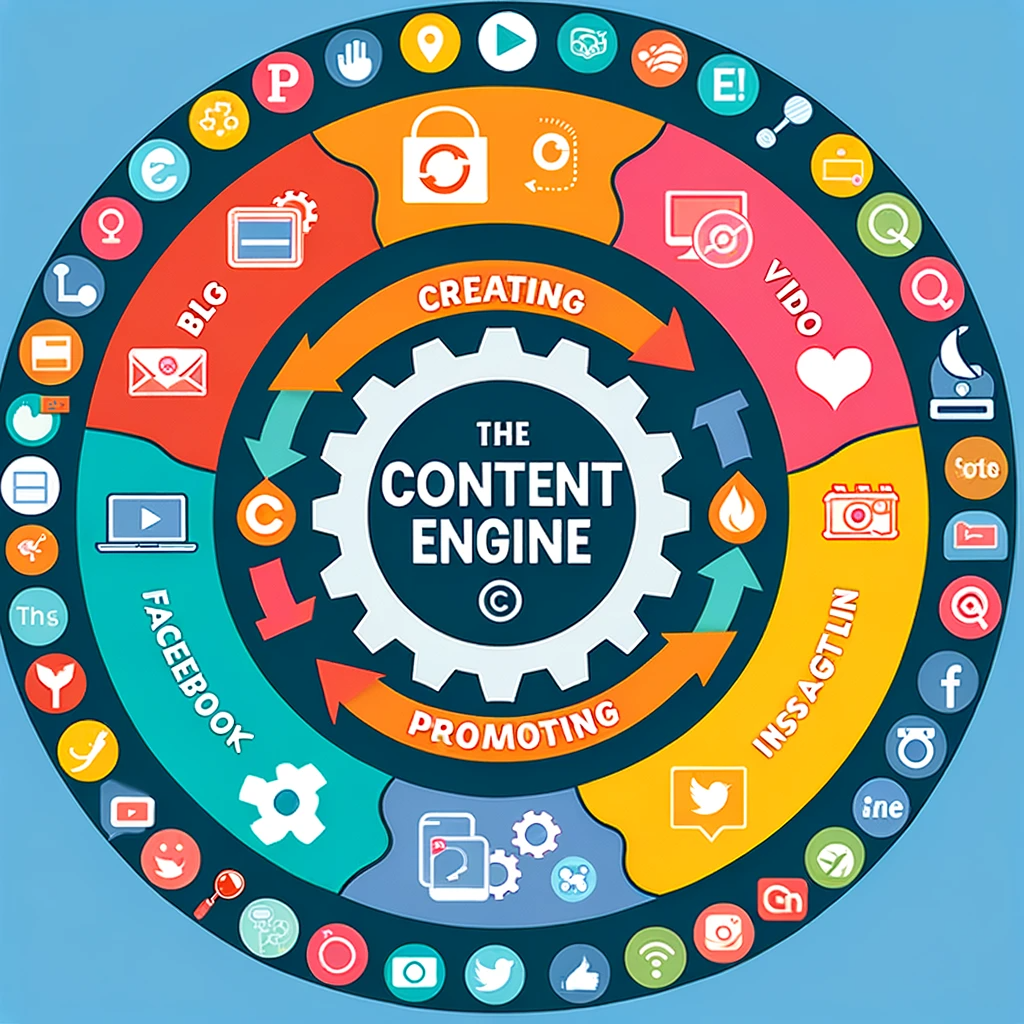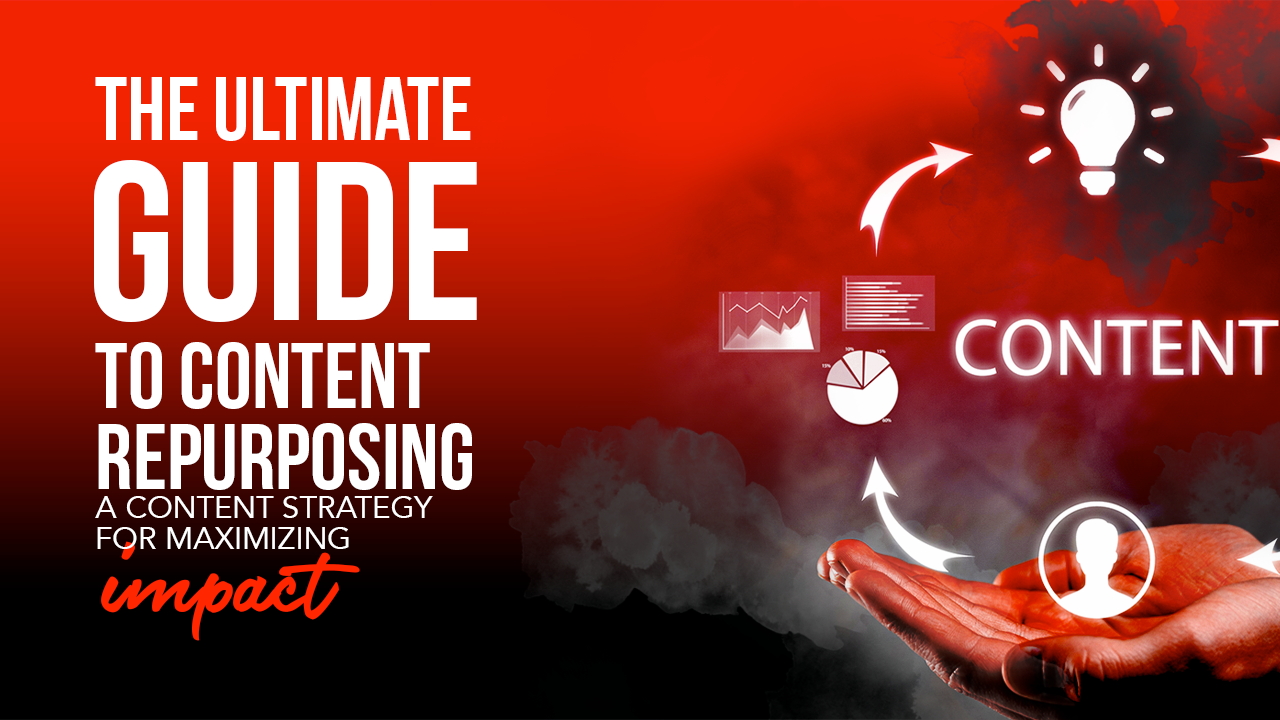In today’s fast-paced digital landscape, content is not just king; it’s the cornerstone of your brand’s digital presence and authority. However, the challenge for many brands is ensuring that their content continuously engages and reaches new audiences. This is where the strategic art of content repurposing comes into play. Content repurposing is not simply recycling—it’s about reinvigorating and reintroducing your content to suit varied platforms and audiences. In this guide, we explore how a monthly structured workflow can enhance your content repurposing efforts.
Understanding Content Repurposing
Content repurposing involves reimagining existing content into new formats and contexts. It’s akin to a content metamorphosis, where a single piece can evolve into various forms, each crafted to captivate different digital environments. This process extends the life, reach, and effectiveness of your content.
Monthly Workflow for Content Repurposing
Embarking on a monthly journey of content repurposing requires a strategic approach that seamlessly integrates various steps into a cohesive workflow.
Step 1: Content Audit
At the onset of each month, the journey begins with a thorough audit of your existing content. This step involves sifting through your content library to identify those pieces that have performed well in the past and have the timeless quality, making them ripe for a refresh and capable of being reformatted to meet current trends and audience needs.
Step 2: Define Your Monthly Goals
As you chart out your course for the month, setting clear objectives becomes crucial. These goals could range from enhancing web traffic and improving SEO rankings to boosting social media engagement.
Step 3: Audience Analytics
With these goals in mind, the next step is a deep dive into understanding your audience. By analyzing audience segments across different platforms, you can tailor your repurposing efforts to resonate with the unique preferences and behaviors of each segment.
The heart of this monthly process lies in selecting and transforming content.
Step 4: Transforming Your Content
Here, you choose which pieces to repurpose, guided by their past performance and relevance to your monthly objectives. Once selected, the creative phase begins, where you decide on the new formats your content will take. This decision is shaped by current trends and what resonates best with your audience, be it transforming a blog post into a captivating video or a detailed report into an engaging infographic.
Step 5: Content Adaptation & Optimization
The crafting and adaptation phase spans across the month, where you meticulously mold your content to fit its new format, ensuring it aligns perfectly with the nuances of each chosen platform. In parallel, a continuous focus on SEO optimization ensures that your repurposed content is primed to reach the top of search engine results, enhancing its visibility.
An integral part of this process is planning your publishing schedule. Developing a detailed editorial calendar for the month ensures that the release of your repurposed content is well-timed and consistent, creating a steady rhythm in your content delivery.
Below is a detailed editorial calendar, structured to showcase a comprehensive monthly plan for content repurposing:
Week | Monday | Tuesday | Wednesday | Thursday | Friday |
Week 1 | Content Audit Identify high-potential content for repurposing. | Goal Setting Define objectives for the month (SEO, traffic, engagement). | Audience Analysis Segment audience based on platform preferences. | Content Selection Choose specific content pieces for repurposing. | Format Planning Decide on new formats for selected content (e.g., video, infographic). |
Week 2 | Content Development Start adapting content into new formats. | SEO Optimization Begin SEO adjustments for new content formats. | Editorial Review Ensure content aligns with brand voice and audience needs. | Content Completion Finalize first batch of repurposed content. | Promotion Planning Develop a strategy for promoting the new content. |
Week 3 | Publishing Release the first batch of repurposed content as per the calendar. | Social Media Scheduling Schedule posts and updates related to new content. | Engagement Monitoring Track audience interaction and feedback. | Mid-Month Review Assess the performance of released content. | Further Content Development Continue adapting remaining content pieces. |
Week 4 | Final Content Preparation Complete the second batch of repurposed content. | SEO Finalization Ensure all content is SEO-optimized. | Publishing Release the second batch of repurposed content. | Promotion Execution Implement the planned promotional activities. | End-of-Month Review Analyze overall performance and gather insights. |
Week 5 (If Applicable): This week is reserved for planning and beginning the next month’s content repurposing process. Review the entire month’s strategy, make necessary adjustments based on insights, and start preparing for the next content audit.
This editorial calendar serves as a dynamic blueprint, guiding the content repurposing process with specific tasks assigned to each day of the week. It ensures a structured approach, balancing content creation, optimization, publishing, and promotion throughout the month.
The promotion of this content is not left to chance. Implementing a robust promotional strategy, utilizing various channels such as email, social media, and other platforms, ensures that your content reaches the widest possible audience.
As the month draws to a close, the focus shifts to evaluating the performance of your repurposed content. This analysis is key to understanding the impact of your efforts and provides valuable insights that guide the planning for the next month. Based on these insights, adjustments are made, ensuring that the upcoming month’s content repurposing strategy is even more aligned with your audience’s needs and your brand’s goals.
This cyclical process of planning, creating, promoting, and refining is the essence of a successful content repurposing strategy.

The graphic illustrating the cyclical process of a content repurposing strategy is displayed above. It visually represents the four main phases: Planning, Creating, Promoting, and Refining, connected in a continuous loop to emphasize the ongoing nature of this strategy. This diagram can be a helpful reference to understand and implement an effective content repurposing process in a business context.
Implementing the Strategy: An Example
Week 1: Content Selection and Planning
- Audit your existing content.
- Define goals and select content for repurposing.
- Plan the formats and platforms for each piece.
Week 2: Content Creation
- Start adapting the selected content into new formats.
- Focus on creative ways to present the content, keeping your audience in mind.
Week 3: SEO Optimization and Promotion Planning
- Optimize the content for SEO.
- Develop a promotion plan for each piece of repurposed content.
Week 4: Publishing and Initial Promotion
- Begin publishing according to the editorial calendar.
- Implement the initial phase of your promotion strategy.
End of Month: Performance Review and Planning for Next Month
- Review the performance of your content.
- Use these insights to inform next month’s content repurposing strategy.
By following this structured approach, your content repurposing becomes a proactive and strategic effort rather than a reactive or ad-hoc process. This method ensures that your content remains fresh, relevant, and continuously engaging for your audience, ultimately maximizing its reach and impact in the digital world.
Get a FREE CONTENT AUDIT today!
FAQs on Content Repurposing Strategy
Who should create your content for social media, based on this content repurposing strategy?
The responsibility for creating content for social media can vary depending on the size and structure of your organization. Ideally, it should be a collaborative effort involving:
Content Marketing Team: They should lead the initiative, focusing on adapting and repurposing existing content for social media.
Social Media Managers: Responsible for tailoring the content to fit each social media platform’s unique audience and format.
SEO Specialists: To ensure that the content is optimized for search engines, even when it’s shared on social media.
Graphic Designers and Video Editors: For transforming text-based content into visually appealing formats like infographics, videos, and images.
In smaller teams or solo operations, these roles might overlap, and it might be necessary to outsource or use digital tools to assist in content creation and optimization.
How to pick content mediums and formats?
Choosing the right content mediums and formats involves a few key steps:
Understand Your Audience: Analyze your audience demographics and preferences on each social media platform.
Evaluate Your Content’s Purpose: Decide what you want to achieve with each piece of content (e.g., engagement, education, conversion).
Assess Resources and Skills: Consider your team’s capabilities in creating different types of content, such as videos, infographics, or podcasts.
Monitor Trends and Competitors: Keep an eye on industry trends and what similar brands are successfully using.
Trial and Feedback: Experiment with different formats and use analytics to gauge their effectiveness.
What are the top content formats by industry?
While content formats can vary widely across industries, here are some general guidelines:
Tech and SaaS: Webinars, how-to guides, explainer videos, and infographics that simplify complex concepts.
Fashion and Retail: High-quality images, lifestyle videos, user-generated content, and interactive stories.
Food and Beverage: Recipe videos, behind-the-scenes kitchen tours, customer reviews, and influencer collaborations.
Healthcare and Wellness: Educational blog posts, expert interviews, patient testimonials, and wellness tips.
Finance and Banking: Informative articles, market analysis videos, infographics on financial planning, and podcasts featuring industry experts.
Travel and Hospitality: Travel vlogs, destination highlights, customer experience stories, and 360-degree virtual tours.
It’s crucial to tailor your choice of content format to align not only with your industry but also with your brand’s unique voice and the specific interests of your audience.









